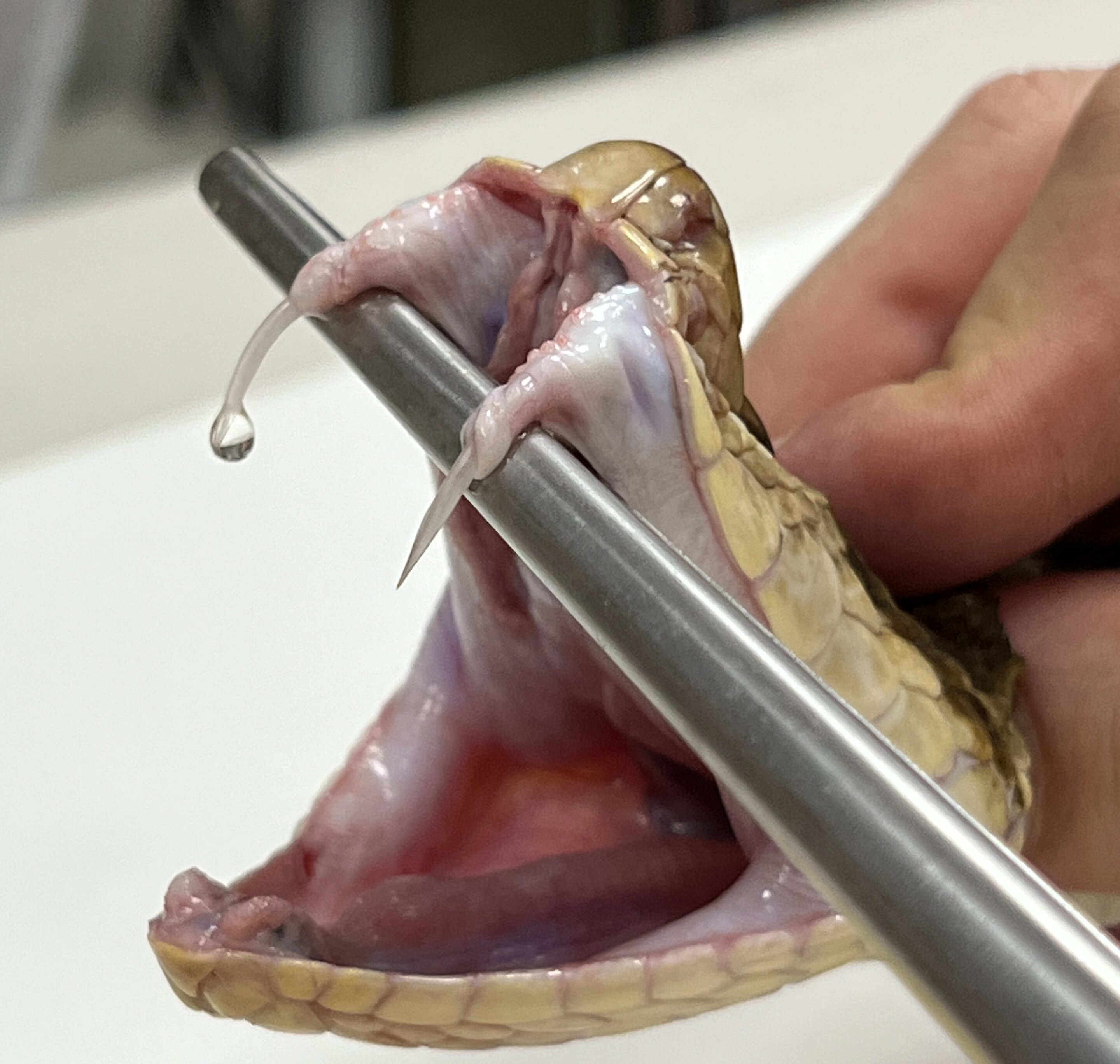What makes a soldier switch sides? That is a really good question, especially when the soldier is an antibody that is supposed to defend the body against one of the world’s most dangerous snake venoms but instead ends up helping the venom kill the body.
The question has become topical after a group of DTU researchers slightly changed how they tested an antibody that had previously proven promising as an antidote to snake venom. In the first experiment on mice, the damaging effect on muscle tissue from the venom of Bothrops asper, a Costa Rican lancehead snake, was neutralized as expected. But in the second experiment, the antibody enhanced the snake venom’s potency, so that it no longer just affected the muscle tissue, but ended up killing the mice.
The research is published in the journal Nature Communications.
When and how the antibody was administered made the difference between life and death. In the first experiment, snake venom and antibody were mixed together for 30 minutes before being injected into the muscle tissue of the mouse. This method is only slightly similar to treating a real snakebite. In the second experiment, the researchers simulated the usual real-world scenario, where antivenom is administered after a snakebite: First, they injected the poison into the muscle tissue of the mouse. Three minutes later, they injected the antibody into the mouse’s veins.
“The fact that the antibody amplifies the toxin when venom and antidote are administered in different ways is an incredibly interesting discovery from a research point of view,” says postdoc Christoffer Vinther Sørensen from DTU, who was testing the antibody when the observation was made.
“This is a significant discovery we have arrived at,” says Professor Bruno Lomonte from the University of Costa Rica. Alongside his colleague, Professor Julián Fernández, he has collaborated with Sørensen and his project supervisor at DTU, Professor Andreas Hougaard Laustsen-Kiel, for the past four years. They hope that the discovery will contribute to expediting the development of the next generation of antivenom, ensuring that many people in need can benefit from it sooner.
The phenomenon, which the researchers have observed, is known as antibody-dependent enhancement of toxicity (ADET) and has not previously been observed in connection with toxins from the animal world and it remains a mystery in most areas. For example, scientists do not know how an antibody designed to combat venom can switch sides and instead intensify the toxins’ attacks on the body.
“We haven’t figured out how this happens, but it helps to identify another important aspect that should be tested when working with antibodies,” says Sørensen.
His research project is part of international research work aimed at finding a broad-spectrum antivenom based on human antibodies that can be used as treatment against the world’s most dangerous snake venoms.
“Antibodies can fail in many ways. By mapping these ways, we and other antidote researchers in the future can ensure that promising antibodies are tested as soon as possible in the most essential experiments. We hope that this allows us to discard antibodies that are not optimal and quickly arrive at a final antivenom that can neutralize the world’s most dangerous snake venoms,” says Sørensen, and adds, “While we don’t know why a ‘soldier’ switches sides, we now know that it’s something to keep an eye on, even with our close friends, the antibodies.”
More information:
Christoffer V. Sørensen et al, Antibody-dependent enhancement of toxicity of myotoxin II from Bothrops asper, Nature Communications (2024). DOI: 10.1038/s41467-023-42624-5
Citation:
Tests can reveal whether an antibody can turn into a killer (2024, January 16)
retrieved 16 January 2024
from https://phys.org/news/2024-01-reveal-antibody-killer.html
This document is subject to copyright. Apart from any fair dealing for the purpose of private study or research, no
part may be reproduced without the written permission. The content is provided for information purposes only.


